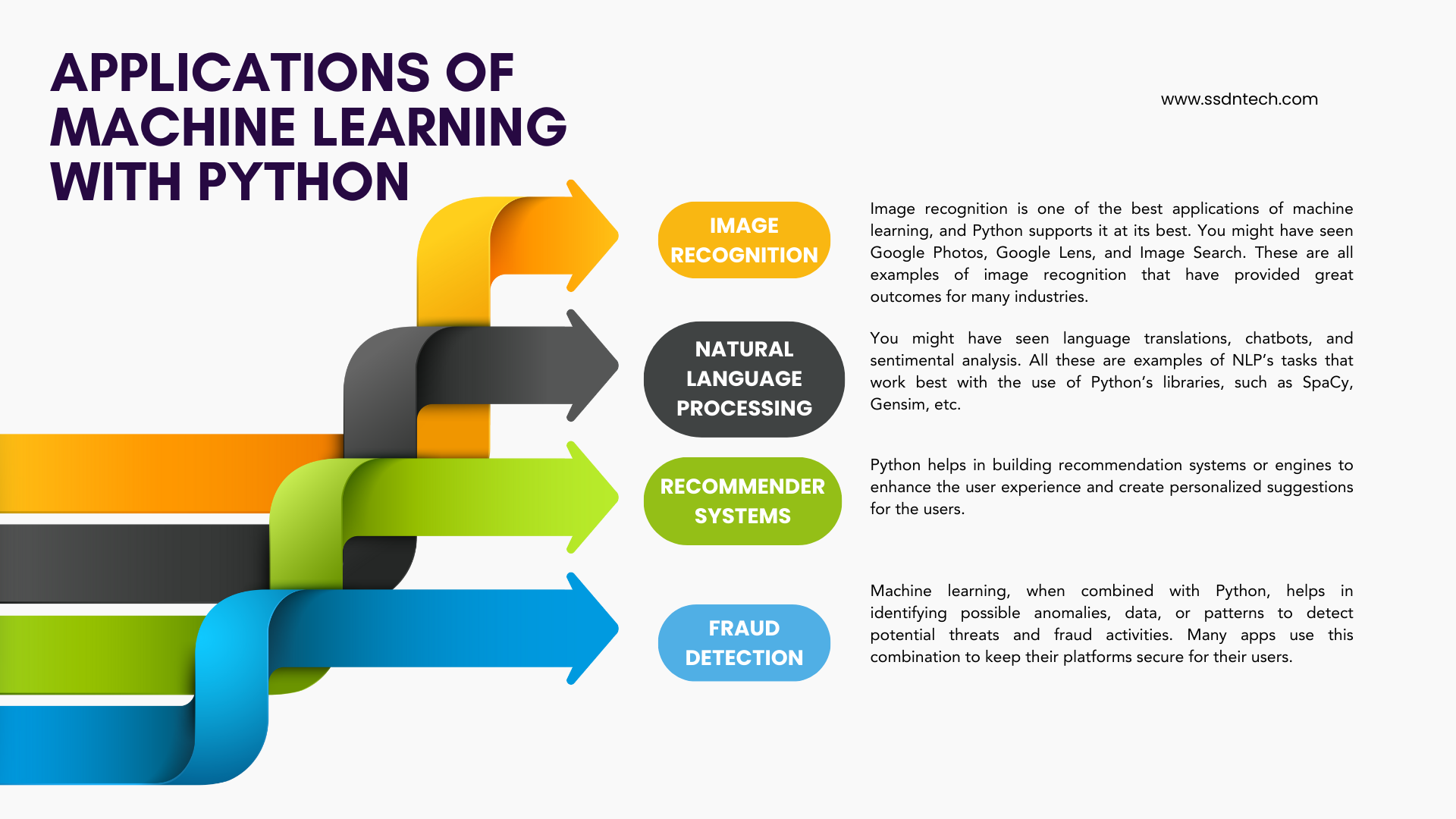
Updated on: December 14, 2023
Machine learning is a subset of artificial intelligence processes, as per the patterns found in the data entered. It is that field of operations that can help you make quick and accurate decisions without much difficulty. Basically, it automates the tasks and gives back mind-blowing results using a combination of Python’s libraries for machine learning. Let’s explore scope of machine learning with python
Does Siri follow your commands? Is your YouTube suggesting exactly what you are looking for? Have you ever wondered how Amazon knows about the products you purchased last time? These instances are just live examples of the working mechanisms of machine learning. These are nothing but the bits of data you entered once you visited these apps. This is how machine learning works.
Learn Machine learning with python course from industry experts from scratch.
Machine learning learns from the patterns in your data and presents a large pool of options in front of you as a result. It helps in automating monotonous tasks and is able to solve even complex problems without any difficulty. Have you ever noticed how machine learning does such amazing things? It’s all because of its compatibility with Python.
Book a slot for Machine learning training in delhi
Yes, you heard it right! It’s the Python programming language that, when combined with machine learning, clears off all the cloudy doubts and provides the best support for building predictive models, recognizing image and speech data, and performing data analysis.
What all can Python Bring to the Machine Learning Table?
Python, being the most versatile language, is widely known for its robust ecosystem and large community support. When this interpretive language takes hold of its libraries and frameworks and starts working with machine learning, it brings the real magic to it. Python helps in:
- Preparing the data: Python’s libraries, such as Pandas, help simplify processes such as data ingesting, cleaning, and transformation that form high-quality data.
- Model Development: Frameworks such as Scikit-Learn and PyTorch provide the necessary support to the developers and help in creating, training, and deploying predictive models.
- Data analysis: frameworks such as Matplotib help in offering detailed analysis of the data patterns and models.
- Application deployment: Python libraries and frameworks are capable enough to offer seamless integration and deployment of applications.
How does Python Leverage the Maximum in Machine Learning?
Python needs no further introduction. Everyone in the development world knows about this versatile language. It is the language that can handle multiple tasks single-handedly. How does it perform like this? The below-mentioned features will help you understand this.
- It brings in agile prototyping: Python, when coupled with some other development environments, results in quick prototyping that allows the developers to test and predict results and generate important information from the data.
- It gives access to pre-trained models: Python comes up with such libraries that ensure access to some pre-trained models that demand less training and resources. Such things speed up the building of advanced models.
- It supports easy integration of tools and languages. With Python, tools and languages can be integrated well, which benefits data migration, virtualization, and deployment.
- It has expertise in various industries. Python is known for its versatile nature, so it can be implemented and deployed for creating different machine learning models.
Enroll for the Python course in training gurgaon
What are the Applications of Machine Learning with Python?
Python, when combined or collaborated with machine learning, brings unbelievable results. You can watch the results of this collaboration with the help of these applications.

Image recognition is one of the best applications of machine learning, and Python supports it at its best. You might have seen Google Photos, Google Lens, and Image Search. These are all examples of image recognition that have provided great outcomes for many industries. You can see the use of image recognition in several industries, such as healthcare, authentication, etc.
Natural Language Processing: You might have seen language translations, chatbots, and sentimental analysis. All these are examples of NLP’s tasks that work best with the use of Python’s libraries, such as SpaCy, Gensim, etc.
Recommender systems: are you an avid user of shopping apps, or do you like to binge on your favorite series or preferred series on Netflix? Have you ever thought about the exact recommendations made by these apps? Python helps in building recommendation systems or engines to enhance the user experience and create personalized suggestions for the users.
Fraud Detection: Machine learning, when combined with Python, helps in identifying possible anomalies, data, or patterns to detect potential threats and fraud activities. Many apps use this greatest combination to keep their platforms secure for their users.
Alos learn:- Role of Python Programming in Machine Learning
Python, when combined with machine learning, results in several innovations and developments. It’s not that this collaboration comes with no challenge. It does come, but with the ongoing advancements experienced by libraries, it’s easy to keep off the challenges and bring out powerful and efficient machine learning solutions and systems.
Once you are aware of what Python can add to your Machine learning models, you can use it effectively and efficiently.





